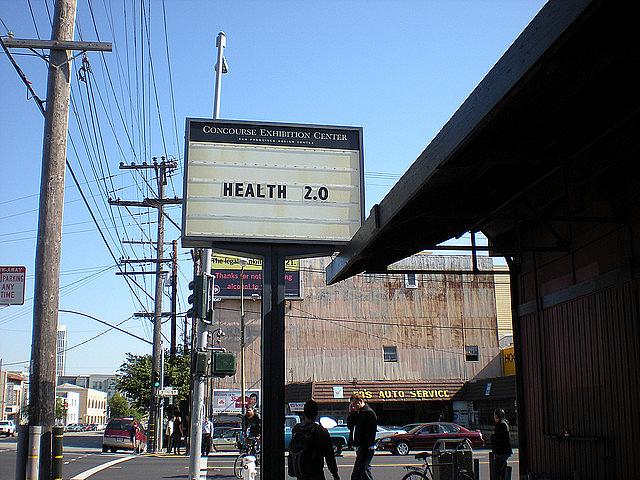Coding for Health: Health 2.0's Global Code-a-thon

This year’s Health 2.0 code-a-thon was markedly different from last year’s because the global competition judging was first — the first ever Developers World Cup. Teams from as far away as Fukushima and Stockholm had flown in for this final judging.
The room was full of milling stress. People sat, then stood, then twitched as they waited for their mere five minutes to explain all the work, heart and sleepless creativity they’d shoved into a brand new piece of hopefully life-changing health technology.
The ideas were all innovative, and the judges were impressed with the quality of the developed tools. First place went to the New York team's entry, second to the New Delhi team, and third place went to the Stockholm team. A special honorable mention went to the Fukushima team. My fellow judges include Sastry Nanduri, Gretchen Wustrack, Forrest King from Novartis, Michelle Snyder, and Unity Stoakes.
Here's more about their work:
NYC: This team introduced MedTuner, a Twitter app. Suicide now kills more Americans than traffic accidents, and many of those suicidal messages are posted on Twitter. The goal is to get ahead of that moment when someone recognizes they are in crisis and help them make an appointment with their doctor. MedTuner's possible uses include suicide, travel, post-partum depression, rare disease clinical trials and adverse drug reporting.
Boston: This team’s work centers on "health tokens." There are so many people offering products and information in this area of changing behavior that people often don’t know where to go. The Boston team chose to focus on the "pre-contemplation" stage of behavior change. Their purpose to "to provide meaningful bursts of information to patients at a time when they are most receptive using social media. They are creating a "healthy tokens engine" and aggregating information from social media and looking at information that people are posting about their behavior. Their first campaign is around emergency room visits. People tweet about a visit and then they send the patient information about ways to be better-informed. Preventing unnecessary ER visits could save billions of dollars each year.
Fukushima: This team focused on victims from both the San Francisco earthquake and the Fukushima nuclear meltdown after the tsunami. The first 72 hours are crucial. Their challenge was to address this issue by developing iTriage. Medical providers can register and share their expertise. iTriage allows maps, reporting of situations, and identification of the person reporting information. Currently the information is peer-to-peer, but could be moved to cloud. The developers said it was meant to be internationally available, and that its usefulness could begin even in the first moments after a disaster, when reports about the disaster's severity could be inconsistent.
New Delhi: This team's wearable health platform is called "Stasis" and "Fall-proof." It takes an alert system and transforms it to a monitoring jacket. They took off-the-shelf market electronics and adapted them to be stitched into a person’s own clothes. The goal: for people to be able to live independently, longer. Information is pushed to the wearer's electronic medical record by pushing first to a data cloud. The wearable health platform includes location tracking, health monitoring, critical alerts, e-pill box, health record and improved doctor-patient links. Alerts can be sent to caregivers, hospitals and providers, as well as local emergency services.
Shanghai: This team focused on prevention and early detection. Early disease detection, in particular, is a problem, with large differences in services available to groups of people, based mostly on the "size of their wallet." Any person can go onto this project, my health planner, enter as a certain person with an age, and get a summary of an international group’s health screening recommendations. You get an overall listing of every country’s recommendation. It also presents a screening plan for each patient, as well as the costs. The system is designed to be a module for a health portal. The developers also pointed out the cultural differences in countries’ approaches to early detection and screening - that patients are often not screened at all.
Stockholm: The Stockholm team is a company called Line, whose mission is to "get healthcare connected." They have already built a tool called Piddle, a diagnostic medical device that tracks urinalysis results. They are doing a pilot project in Uganda. Asthma and COPD was their target illness for this competition. They developed a smart-phone based spirometer called "Blow." Public data on air pollution can be presented to the user because they know the user’s GPS location. Data is entered into the app in order to calculate their spirometry values. Simple information is collected at the time of the spirometry (such as whether or not an inhaler was used prior to using the spirometer). Piddle also could be used to detect worsening COPD. The team envisions an ecosystem built around respiratory health and data.
Washington, DC: This team's project aimed to "fix" the FDA’s adverse reaction database. They have a giant list of products, patients and reactions. To clean up "dirty" data, the team began with the FDA's data and connected it to the publicly available crowd-sourcing of information (such as all the variations on company names). They developed an algorithm for all possible sources in Wikipedia to verify. More than 22,000 drugs were reduced to 3,500. The system can look at 161 million combinations of 3 drug reactions, with a 1-3 second response time. There is also a format for entering data for patients.

